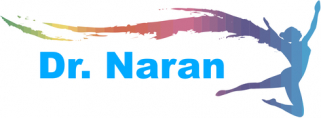Trigger Point therapy
Trigger points are knots in a muscle that have developed from an injury or strain. These points are painful and sensitive to pressure. They cause pain in the local area and in distant areas known as ‘referred pain’. Imagine the muscle as being made up of many elastic bands. When a few of the bands are injured a knot sometimes develops in this elastic band. Some of them heal easily while others do not resolve and continue to cause pain.When this occurs they are called Trigger Points. Even though the muscle (elastic band) is stretched the knot does not change. Thus when one moves an injured muscle through a range of movement one is unable to do so without the discomfort.
These knots are also highly electrically charged, have decreased oxygen supply and release many chemicals in the muscle which further aggravate the problem. Once these knots are released the muscle regains its normal elasticity, thereby relieving the pain.
Yes. They are very common, but rarely diagnosed. Many general practitioners and orthopaedic surgeons are not aware of Trigger Points. Since Trigger Points do not show up on X-rays or scans, patients may be told that nothing is wrong with them.
Conditions such as headaches, neck pain, shoulder pain, lower back pain, the symptoms of carpal tunnel syndrome and tennis elbow, and many kinds of joint pain which are misdiagnosed as arthritis, tendonitis, or ligament injury.
A Trigger Point may develop following an acute muscular strain, a fall, a sprain, a fracture, or excessive or unusual exercise. Trigger Points may also arise due to consistent bad posture, bad work and/or bad sleep habits.
I treat Trigger points by inserting a hypodermic needle into the muscle knot and injecting a little bit of local anesthetic into the knot. This is a quick in and out needle that takes seconds.Each muscle is treated this way. Most treatments need about 3 to 10 quick insertions to treat all the muscles involved.
If the pain is recent, relief is within a few hours to a few days. Chronic conditions may take 1 week or more to notice a change. For most of the pain conditions, I recommend that patients try 4 treatments. After this time, there should be a 40% relief of the pain. Only then do I advise patients to continue with more therapy to get more relief.
Most of the benefit comes by putting a needle into the tight knot hence releasing the knot. The local anesthetic decreases the nerve sensitivity. There is no numbness after the treatment as only a few drops are required to calm the hyperactive nerve. Over a few treatments, the nerve becomes less reactive.
Each treatment session takes approximately 10 minutes.
Consultation: Covered by MSP.
Trigger Point Acupuncture: Covered by MSP.
- NO Referral from a Physician is required.
- Laser and Acupuncture may be covered by some extended health plans.
- Dr. Naran is certified in Acupuncture and Laser Acupuncture but is not an acupuncturist, he is a qualified Physician practicing acupuncture.
- Copies of his certifications are available for insurance purposes upon request.
A summary of myofascial pain and trigger injections written in May 2022.
https://www.ncbi.nlm.nih.gov/pmc/articles/PMC9116734/
The most comprehensive article written by a physical medical specialist. A must read for the more interested.
http://emedicine.medscape.com/article/89095-overview
A very practical comment on the referral pain patterns from trigger points.
http://triggerpointrelief.com/cdrom/trapezius.html
Trigger point therapy for sports-related injuries and other pain conditions.
http://www.triggerpointacupuncture.com/
This article is written by Jan Dommerholt, one of my teachers during my training. He has written many excellent articles on the subject. Check the rest of the website.
http://www.bethesdaphysiocare.com/pdf/advance_dommerholtinterv_08.pdf
An overview From the American Academy of Family Physicians.
http://www.aafp.org/afp/20020215/653.html
Evidence suggests that acupuncture points and TPs are the same. A recent study done by Dr. Peter Dorsher of the Mayo Clinic revealed that there is indeed some co-relation between acupuncture and TP therapy: “I think it is fair to say that the myofascial pain tradition represents an independent rediscovery of the healing principles of traditional Chinese medicine. What likely unites these two disciplines is the nervous system, which transmits pain. This is good news for anyone looking for relief.”
No. Rest is required for healing. Since the muscle is already in a contracted state, any exercise or stretching may reactivate the Trigger Point.
